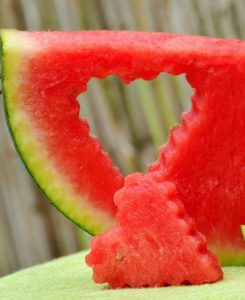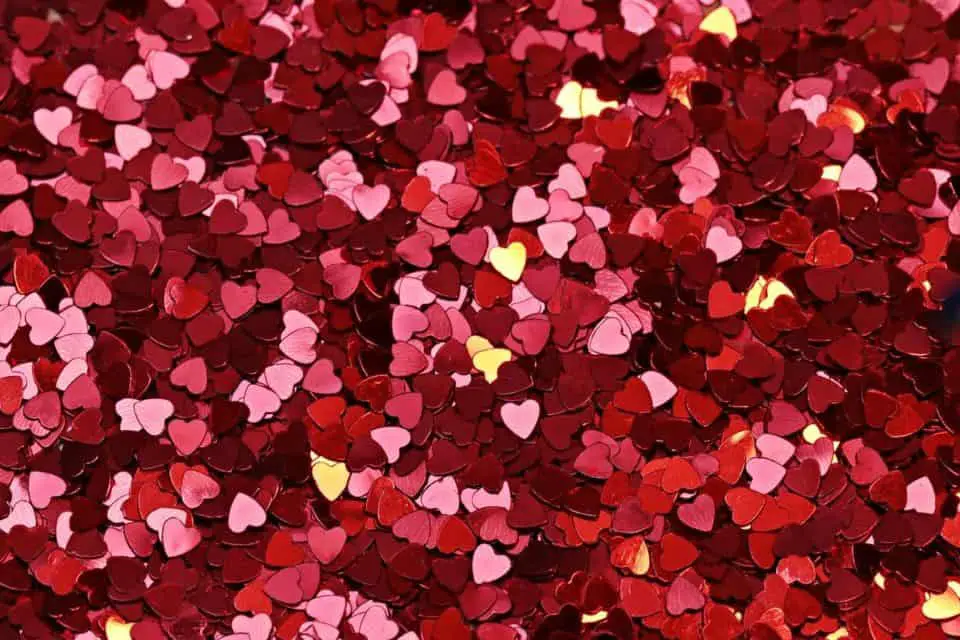Some links in the post are affiliate links and I get a commission from purchases made through some links found in the post.
If you are a collector of philodendrons then you will no doubt have been looking for one of these magnificent plants to add to your collection. You may also have had a very frustrating search trying to find one.
Why? – because they are very difficult to find. They are classed as one of the rarest philodendrons around. They are not called the red heart philodendron for nothing – many hearts have been broken in the search for this specimen.
In the US or Europe is it almost impossible to find a stem to take a cutting from and many people resort to places like Thailand to ship them.
Not that this does not bring problems either as many plants arrive dead or with root rot severe enough to kill them anyway.
Origin and history
 This plant is called a hybrid mutant. It is one of the slow growing members of the araceae family and has deep green leaves which will eventually fan out to reveal a red centre.
This plant is called a hybrid mutant. It is one of the slow growing members of the araceae family and has deep green leaves which will eventually fan out to reveal a red centre.
Very little is known definitively about the cultivation, in fact, it is mostly speculation about who first grew them and where they originally came from.
What we do know is that the plant was first hybridized in South America and can now be found in tropical places such as Indonesia, Thailand, and the Philippines.
The red heart philodendrons are not native to these tropical places, they were introduced there by man.
What is a Red Heart Philodendron?
The red heart philodendron is a rare and very unusual hybrid that develops a deep red colouring from the centre of the plant and fans out along the centre of the leaves.
Red heart philodendrons prefer to live in drier conditions than most other philodendrons.
Is a Philodendron Red Heart Rare?
Yes, the red heart philodendron is classed as one of the rarest of the family because it is found in so few places growing naturally.
It is normally propagated by cuttings, although these can be impossible to get hold of as waiting lists are very long.
Note: Because this is classed as a hybrid mutant it is almost impossible to tell what you will end up with if you take a cutting, you may end up with several plants of different colours and not one of the red heart centres.
You may also like: How to care for a philodendron over winter
How do you Take Care of a Philodendron Red Heart Plant?
If you have one of these plants then most likely you will have imported it. Bear in mind that your new plant has been subjected to all kinds of stress, and far more than the average plant you carry home from your garden centre.
On Arrival at your Home:
Check the Moss at the Roots
More than likely your new red heart will arrive with moss wrapped around its leaves. You need to remove this before you plant it.
While the ball of moss will have kept the roots moist during travel, it will retain a huge amount of water and may leave your plant waterlogged. Remove it as soon as you are ready to plant the cutting.
Expect Some Parts to Die
It is normal that some leaves die, in fact a great amount of them may simply fall off. Do not start to panic too early as this is a normal part of transit issues.
Be prepared to wait up to several months for any new growth to appear and new leaves to emerge.
Isolate your New Addition
This is important because you do not know whether your new plant has arrived with any pests and diseases.
It is a good idea to brush all the stems and leaves with neem oil to prevent any mites or fungus from spreading.
How to Propagate a Philodendron Red Heart Plant
All propagation should be carried out at the start of spring and certainly when things have warmed up because you stand a better chance of developing new roots this way.
Never start your propagation in winter as it is simply too cold and growing conditions are at their worst.
If you are enjoying this article, check out our article on how do you care for a philodendron tiger tooth.
How do you Take Care of the Red Heart Philodendron?
There are several things which are important for your red heart philodendron to survive.
Light
Red heart philodendrons love plenty of bright, indirect light. They also require at least 1 – 2 hours of cool, early morning sunlight.
It is the cool direct light that makes for bigger leaves and deeper red colours. This light also means better growth for the plant.
If your plant is struggling due to light, trying using this to help regulate the lighting.
Soil
The red heart philodendron is the same as all the other types in that it loves and thrives in soil which has a good balance of drainage and moisture retention.
There are mixes that you can assemble yourself to repot your red heart in:
Here’s a good mixture:
-

40% coco coir
- 10% perlite
- 10% activated charcoal
- 20% orchid bark
- 10% worm castings
- 10% pumice
This makes the ‘soil’ a 50% organic/30% inorganic ratio mix. You will see that there is a significant amount of bark in this mix.
This helps to retain the moisture a little more than the mixtures you may find at your garden centre.
Watering the Red Heart Philodendron
You should never let the soil mix dry out completely between watering, because this plant loves evenly moist or slightly damp soil.
Too much water is just as detrimental as too little. Both can lead to root rot which may kill your plant.
Here’s a test to check on the moisture in the soil. Insert one finger deep into the potting mix and then extract it. Look at your finger.
If the first and second knuckles are moist, the plant does not need water. If these knuckles are dry then it is time to water the plant.
Another way to tell if the plant needs water is to examine the soil. If the mix is really dark then it is moist and may not need watering. If the mix is compacted and hard to the touch, the plant needs water.
If you need help watering your plant, try using this automatic drip irrigation kit.
Humidity
Red hearts simply love humidity! An environment of between 60 – 80% humidity will produce larger leaves, and brighter, bolder colours.
Philodendrons can however do well in humidity as low as 40-50% which is what many homes have.
You may notice in the winter that the humidity drops. If so then you may want to buy a small humidifier to keep the air around the plant moist.
Check the Temperature
Although they prefer slightly warmer temperatures of between 71 degrees F – 86 degrees F, they will still grow down around the 50-degree F mark. Below this and your red heart will wilt and develop stunted growth.
Fertilizer
Because they are in pots, house plants do not have a natural way of getting their nutrients from the soil. For this reason, they need regular feeding if they are to do well. Try this easy to use fertilizer to give your plant that little boost.
Look for fertilizers that contain a good ratio of phosphorus, nitrogen, and potassium. A good quality fertilizer will contain all these ingredients as well as micronutrients such as iron, calcium, magnesium, and zinc.
Final Thoughts
 If you intend to add a red heart to your collection of philodendrons, then it is worth knowing all about it before you bring it home.
If you intend to add a red heart to your collection of philodendrons, then it is worth knowing all about it before you bring it home.
Not only are they classed as rare, but they are also hard to come by. Make sure that you buy from a reputable dealer, so you know you are getting what you pay for.
Once your new red heart philodendron is home, take a few minutes to check it over, isolate it until you are sure it is disease free and then decide where you want to place it.
Choose a spot which supplies the kind of environment needed for this unique plant and with a bit of care and attention, you will have a spectacular addition to your philodendrons.
Do remember that the foliage of the philodendron is toxic, making it unsafe to ingest by both humans and animals.
Before you go, here are some more related articles I encourage you to read below to help solve more of your gardening issues:
Can a Philodendron be put Outside


